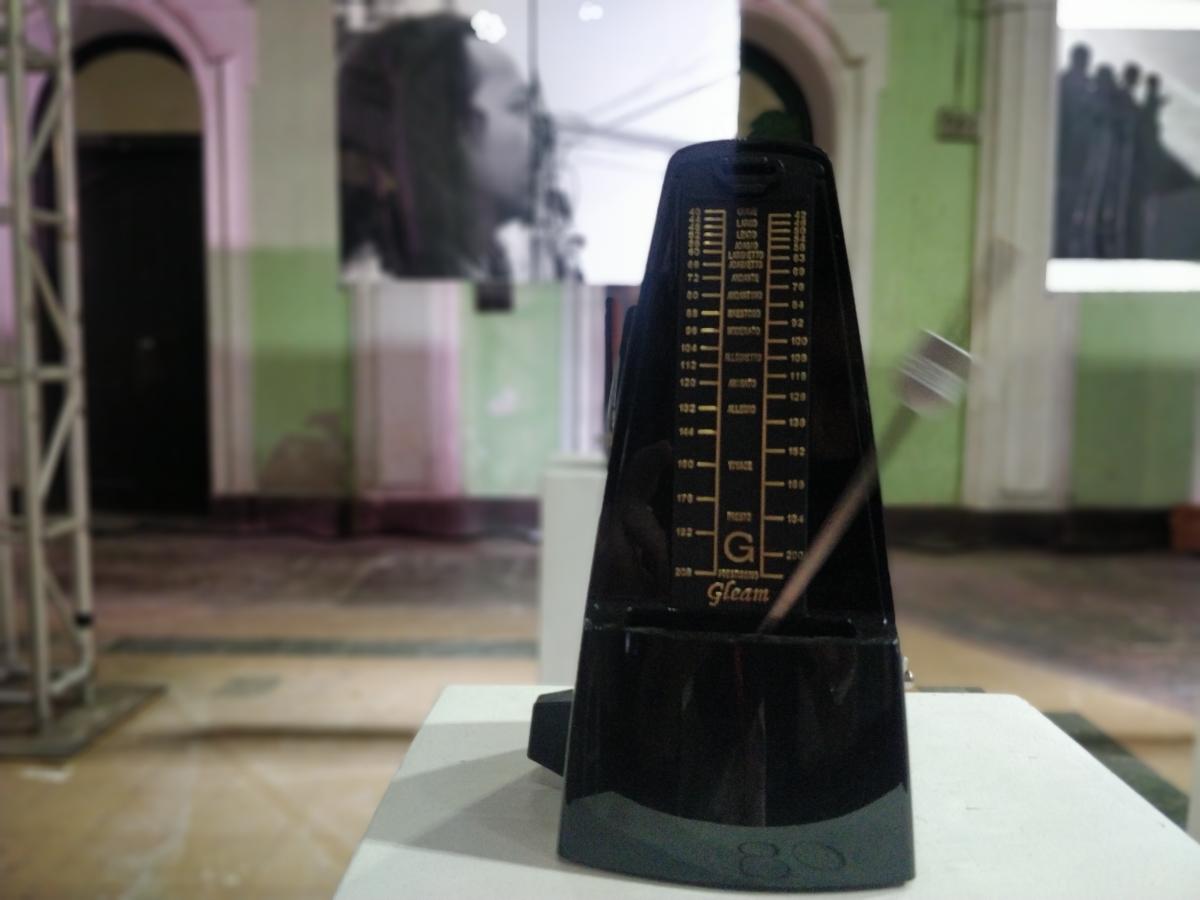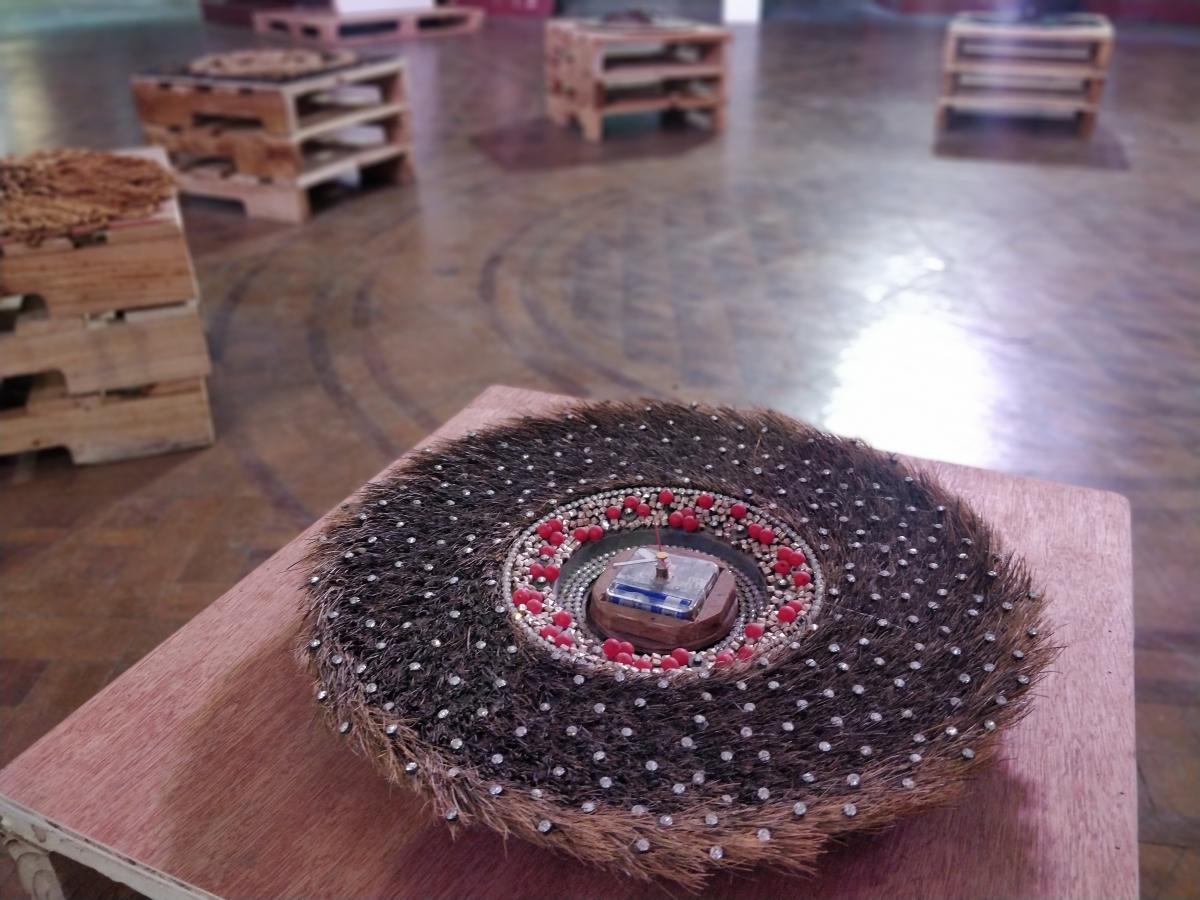
Myanmar and Singaporean artists breathed new life into a century-old Yangon landmark on the weekend with works on the well-suited theme of time.
Chin Tsong Palace, an elaborate five-storey mansion overlooking Kabar Aye Pagoda Road, housed installations as part of the fourth Singapore Festival on February 1-2.
In one of the displays, Singaporean Marc Nair and his Myanmar counterpart Maung Day held an exchange of photography and poetry on Yangon and Singapore.
Among the words and images were metronomes, ticking at a range of tempos to reflect the varying speeds of the two places.
Near the entrance was the first piece of what the organisers described as an “Art Walk” that encouraged visitors to consider the concept of time.
The piece, by visual artist Urich Lau, projected audiovisual manipulations of the old villa across the wall and ceiling that intentionally fragmented, creating a disorientating effect.
Artist Calvin Pang, sculptor Nann Nann, and students of Myanmar’s State School of Fine Arts, which is based in the compound, created an installation titled “A Matter of Time” in the atrium.
Pang made clocks with ticking hands but stripped of any numbers, while Nann Nann and the students made clocks of traditional items such as thanaka.
Towards the ceiling dangled glittering ribbons with poetic phrases in Myanmar and English made by artist Nicola Anthony on her time in Yangon and Singapore.
Visitors also enjoyed Aung Ko’s 10 television screens, each showing one-minute videos taken around the world that emphasised the relativity of time.
Upstairs, Thynn Lei Nwe used large papier-mâché sculptures of dogs and plants in her piece advocating better treatment for animals.
Meanwhile, around the palace grounds, Bart Was Not Here, Thu Myat, and Wunna Aung, also created papier mâché sculptures of their own.
Bart Was Not Here combined traditional egg-shaped toy called pyit taing htaung with his signature anthropomorphic character from his recent painting series “God Complex.”
Thu Myat and Wunna Aung displayed a papier mâché cow and rocking horse following the traditional method: first sketching a model and carving a mould, then coating strips of paper and drying them in the sun.
With this time-consuming and labour-intensive process, they produced biodegradable and environmentally friendly artworks, only made of natural components.
Curator Marie-Pierre Mol said the artists had been working “almost every day since early January” on the event.
“They are all very talented and I have been so excited to work with them,” she said.
Some of the artists had personal connections to the building, such as Wunna Aung who studied in the art school, and so, like Mol, everyone jumped at the chance to work in the grand palace.
“This building is full of history and when you are here the first thing you think of is memory, passage of time, and what’s going to happen to this building,” she added.



